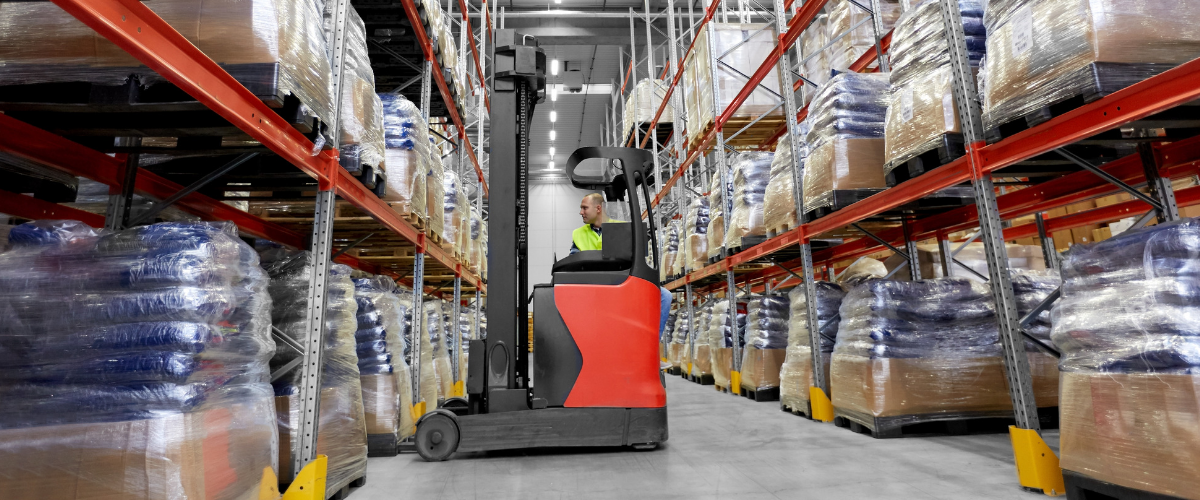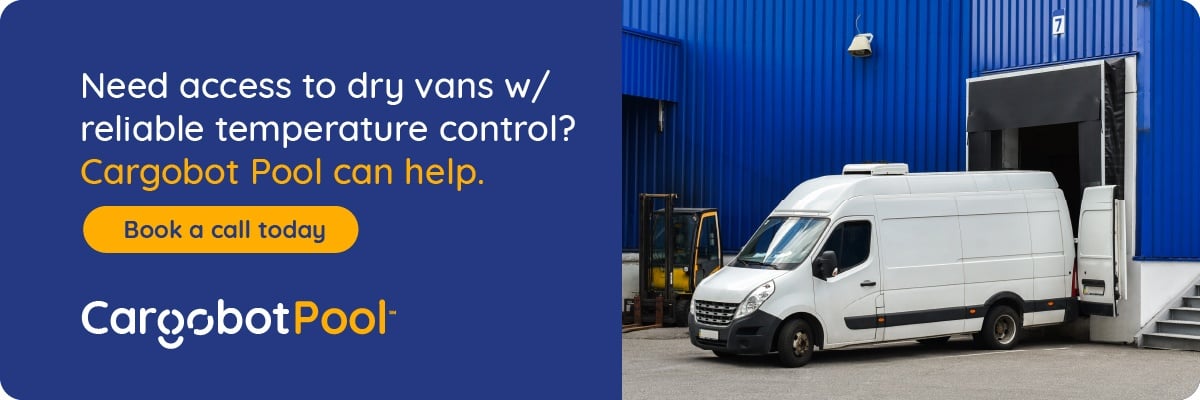Partial Load Shipping vs LTL: Which is Best for Reefer Cargo?
When it comes to shipping over-the-road reefer cargo, companies are faced with choosing between partial load shipping and less-than-truckload (LTL) shipping. As a business owner or logistics manager, understanding the differences between these two methods is crucial to ensure your perishable goods arrive safely and efficiently.
Let's delve into partial load and LTL shipping to help you determine which option is best suited for your reefer cargo needs.
Partial Load Shipping: What You Need to Know

Partial load shipping, also known as volume shipping or partial truckload shipping, is a type of freight transportation that caters to shipments larger than LTL (less than truckload) but smaller than a full truckload. Partial load shipping involves shipping goods that do not fill an entire truck.
This shipping method is gaining popularity amongst businesses dealing with refrigerated and frozen cargo, and for a good reason.
Let's dive into the key factors that make partial load shipping an attractive option for reefer cargo.
Key Benefits of Partial Load Shipping
1) Cost Efficiency
One of the primary advantages of partial load shipping is cost efficiency. Since you're only paying for the space your shipment occupies in a truck, it's often more affordable than a full truckload.
In addition, carriers are more likely to offer competitive rates for partial loads as they aim to fill their trucks and maximize profits.
2) Increased Security
PTL shipments offer enhanced security compared to LTL, as the goods are not exposed to multiple handling points or mixed with other shipments. With PTL, you have more control over the security of your cargo, reducing the risk of theft or damage.
3) Enhanced Flexibility and Reliability
Partial load shipping offers greater flexibility and reliability than LTL shipping. Since your shipment is consolidated with other partial loads, the carrier has more incentive to deliver your cargo promptly and efficiently.
Additionally, sharing the truck space with other partial loads can help reduce the environmental impact of transportation, making it a more sustainable choice for your business.
Partial load shipping can be an excellent option for companies moving refrigerated and frozen freight, as it offers cost efficiency, reduced transit times, and enhanced flexibility and reliability. However, evaluating your specific shipping needs and partnering with a reliable carrier is essential to ensure the best results.
Less Than Truckload Shipping: An Overview

Less than truckload (LTL) shipping involves shipping goods that do not require a full truckload. This allows multiple shippers to share space on a single truck, reducing costs and increasing efficiency.
In the context of reefer cargo, which includes refrigerated or frozen goods, LTL can be a cost-effective solution for businesses that need to move smaller quantities of temperature-sensitive products.
Let's dive into the key factors that make less-than-truckload shipping an attractive option for reefer cargo.
Key Benefits of LTL Shipping
Regarding shipping reefer cargo, Less Than Truckload (LTL) shipping offers several advantages that can benefit businesses of all sizes. By understanding the key benefits of LTL shipping, you can decide whether it's the right choice for your refrigerated and frozen freight needs.
1) Scalability
LTL shipping provides scalability for businesses that experience fluctuations in shipment volumes. Whether you need to increase or decrease the number of shipments, LTL options accommodate these changes more quickly than committing to a full truckload. This scalability allows you to adapt your shipping strategy as your business requirements evolve.
2) Reduced Waste
Refrigerated and frozen freight requires specialized temperature-controlled equipment and proper handling to maintain the integrity of perishable goods.
LTL carriers specializing in refrigerated and frozen freight have the necessary equipment, such as temperature-controlled trailers and refrigeration units, to ensure the goods remain in optimal condition throughout transportation. By leveraging these carriers, you can minimize the risk of spoilage or waste.
3) Improved Supply Chain Efficiency
LTL shipping can enhance supply chain efficiency by optimizing transportation routes and consolidating shipments. LTL carriers are skilled at managing multiple pickups and deliveries, utilizing their networks to create efficient routes that maximize capacity utilization.
You can streamline your supply chain operations by leveraging LTL services, reducing transit times, and enhancing overall efficiency.
Comparing Partial Load Shipping vs LTL for Reefer Cargo

When transporting refrigerated or frozen cargo, businesses often consider partial load shipping (PTL) advantages and less-than-truckload (LTL) options. The choice between partial load shipping and LTL shipping depends on the size and frequency of shipments, as well as the specific needs of the shipper and consignee.
Both methods offer unique benefits for transporting reefer cargo, and understanding their differences can help make an informed decision. Let's explore how PTL and LTL compare in terms of various factors:
Partial Load Shipping vs LTL: Which is Faster?
Regarding speed, partial load shipping often holds an advantage over LTL. With PTL, your reefer cargo is loaded onto a dedicated truck and transported directly to its destination without intermediate stops or transfers.
This streamlined process allows for quicker transit times and delivery than LTL, where multiple pickups and deliveries can extend the overall transportation time. PTL can be a favorable choice for time-sensitive refrigerated or frozen goods to ensure prompt delivery.
Partial Load Shipping vs LTL: Which is More Versatile?
Regarding versatility, LTL shipping offers a broader range of options than PTL. LTL carriers have extensive networks and established routes, allowing more flexible pickup and delivery schedules.
This flexibility is particularly valuable when shipping to multiple regional destinations or when your shipment volume varies significantly. LTL provides the convenience of consolidating smaller loads, accommodating diverse cargo types, and reaching a more comprehensive range of destinations.
If you require greater flexibility in pickup and delivery locations, LTL shipping may be the more versatile option.
Partial Load Shipping vs LTL: Which is More Reliable?
Reliability is a critical factor when transporting reefer cargo. PTL and LTL carriers strive to maintain the integrity of temperature-sensitive goods, but there are some differences to consider.
With PTL, your cargo is loaded onto a dedicated truck, minimizing the risk of mishandling or temperature fluctuations. This reliable handling can enhance the overall reliability of the transportation process. On the other hand, LTL shipments may involve multiple handling points and consolidation, which could potentially introduce additional risks.
However, reputable LTL carriers specializing in refrigerated or frozen freight take stringent measures to ensure proper handling and temperature control, providing reliable services for your reefer cargo.
Partial Load Shipping vs. LTL: Which is More Eco-Friendly?
Regarding environmental considerations, both PTL and LTL shipping have their advantages. PTL can be considered more eco-friendly in specific scenarios.
Since PTL involves loading a significant portion of the truck's capacity, it maximizes the utilization of resources and reduces overall fuel consumption per unit of freight transported.
This efficiency can contribute to a lower carbon footprint than LTL, where individual shipments are consolidated with other cargo, potentially resulting in less efficient use of transportation resources.
However, it's worth noting that many LTL carriers employ optimization techniques to minimize empty miles and maximize efficiency, making their services increasingly eco-friendly.
The Main Takeaway
When choosing between partial load shipping (PTL) and less than truckload (LTL) options for reefer cargo, it's essential to consider factors such as speed, versatility, reliability, and environmental impact. PTL offers faster transit times, while LTL provides greater flexibility in pickup and delivery.
Due to dedicated handling, PTL can be more reliable, but reputable LTL carriers prioritize properly handling temperature-sensitive goods. Regarding eco-friendliness, PTL may have a slight advantage, although LTL carriers employ optimization strategies to reduce environmental impact.
By weighing these factors against your specific shipping requirements, you can make an informed choice that best suits your refrigerated or frozen cargo transportation needs.
Tips For Shipping Partial Load and LTL Freight More Efficiently

Shipping partial load (PTL) and less than truckload (LTL) freight efficiently can help businesses save time, reduce costs, and improve overall logistics operations. Here are some tips to optimize the process:
1) Consolidate Shipments
Consolidate multiple smaller shipments into a single PTL or LTL shipment whenever possible. By maximizing the use of available space, you can reduce transportation costs and increase efficiency. Coordinate with suppliers or customers to synchronize shipments and take advantage of consolidated loads.
2) Plan Ahead
Effective planning is vital to efficient PTL and LTL shipping. Consider factors such as pickup and delivery schedules, transit times, and required temperature controls for reefer cargo.
Proactively coordinating with carriers and scheduling early shipments can avoid last-minute rushes, reduce delays, and ensure smoother logistics operations.
3) Optimize Packaging
Proper packaging is essential to protect freight during transit. Optimize packaging to maximize space utilization and minimize wasted or empty spaces within containers or pallets.
Use efficient packing techniques and consider utilizing packaging materials that provide insulation for reefer cargo.
4) Utilize Technology
Leverage digital platforms and transportation management systems to streamline PTL and LTL operations. These tools can help automate quoting, carrier selection, tracking, and documentation processes.
Choose platforms that offer real-time visibility, allowing you to monitor the status of your shipments and make informed decisions based on accurate data.
5) Choose Reliable Carriers
Partner with reputable carriers specializing in PTL or LTL shipping, especially for refrigerated or frozen freight. Look for carriers with a proven track record in handling temperature-sensitive goods, ensuring proper equipment, and maintaining reliable delivery schedules.
Research carrier performance, customer reviews, and industry certifications to make informed decisions.
6) Optimize Routes
Work with carriers or use route optimization software to identify the most efficient PTL and LTL shipment routes. You can improve transit times and reduce fuel consumption by minimizing distances traveled, reducing empty miles, and avoiding congested areas.
Optimal routing helps optimize resources and minimize the environmental impact of transportation.
7) Communicate and Track
Please maintain open communication with carriers, suppliers, and customers throughout shipping. Regularly track and update shipment status to ensure everyone involved has up-to-date information.
This allows for better coordination, proactive issue resolution, and improved customer satisfaction.
Future Trends of Partial Load Shipping and LTL for Reefer Cargo

The shipping industry is continually evolving, and several future trends are expected to impact partial load shipping (PTL) and less than truckload (LTL) for refrigerated cargo. Here are some trends to watch:
1) Increased Demand for Temperature-Controlled PTL and LTL
With the growing demand for fresh and frozen goods, a higher need for temperature-controlled PTL and LTL services will be needed.
Businesses will seek carriers equipped with advanced refrigeration technology and specialized equipment to ensure the integrity of perishable goods throughout the transportation process.
2) Advancements in Tracking and Visibility
Technology will continue to play a significant role in enhancing tracking and visibility for PTL and LTL shipments. Real-time monitoring systems, Internet of Things (IoT) sensors, and data analytics will give shippers detailed insights into their reefer cargo's location, temperature, and condition.
This transparency will enable proactive decision-making and improve supply chain visibility.
3) Sustainable Practices
Environmental concerns are driving the adoption of sustainable practices in the shipping industry. Both PTL and LTL carriers will increasingly focus on reducing their carbon footprint by optimizing routes, adopting alternative fuels, and investing in fuel-efficient equipment.
Shippers will prioritize eco-friendly carriers to align with their sustainability goals.
4) Integration of Artificial Intelligence (AI) and Automation
AI and automation technologies will revolutionize PTL and LTL shipping processes. Machine learning algorithms will help optimize freight consolidation, routing, and scheduling, leading to more efficient operations.
Automation will streamline administrative tasks such as documentation, invoicing, and tracking, reducing human error and saving time. These advancements will improve accuracy, speed, and overall efficiency in managing PTL and LTL shipments.
Key Takeaway
As the shipping industry evolves, staying informed about these future trends will help businesses remain competitive and adapt to changing customer demands. By embracing technology, sustainability, and efficient practices, companies can optimize their PTL and LTL shipping operations for reefer cargo and enhance their overall supply chain management.
How Cargobot Helps Partial Load Shipping Efforts
![]()
Meet the solution helping shippers move dry and refrigerated partial truckload (PTL) freight more efficiently. Cargobot Pool is revolutionizing the way businesses manage and streamline their freight operations.
With Cargobot Pool, you can access a complete tool suite that allows you to easily create, track, and store partial loads while efficiently monitoring essential details such as shipping costs. By leveraging our advanced technology, you can optimize your PTL shipments and maximize efficiency, saving time and reducing costs.
How Cargobot Helps LTL Shipping Efforts
Cargobot also offers a comprehensive solution for less-than-truckload (LTL) shipping. With Cargobot for LTL, you can get your freight to its destination quicker by leveraging our advanced technology to find the most optimized routes for your LTL shipments.
Our digital platform, combined with a team of dedicated LTL support specialists, stands ready to coordinate all your shipping needs. From compiling quotes and comparing rates to selecting LTL carriers and managing all shipment details, our experts actively monitor and address any issues that may arise during shipping. Experience the efficiency and reliability of Cargobot for your LTL shipping requirements.
Learn More by Requesting a Quote Today

Whether you need to move partial load (PTL) or less than truckload (LTL) freight, Cargobot has the solution. Our cutting-edge technology and industry expertise ensure seamless and efficient logistics operations.
With Cargobot Pool for PTL and Cargobot for LTL, you can streamline your freight management, optimize routes, and enjoy hassle-free shipping. Trust Cargobot to be your trusted partner in delivering your freight efficiently and cost-effectively.
Ready to experience the best cold chain shipping solution for your business? Don't wait any longer!
Start a quote with Cargobot today and discover the difference we can make for your reefer cargo transportation needs.
More Resources to Explore:
- How to Choose the Best PTL Transport Solutions Partner
- 5 Ways Partial Truckload Companies Can Improve Their Supply Chain
- 5 of the Biggest Headaches Facing PTL Shipping This Year
- How PTL Shipping Companies Can Keep up w/ the Latest Technology Solutions & Demands
- 5 Ways Refrigerated Trucking Companies Can Keep Up w/ Industry Demands
- 5 Ways Partial Truckload Companies Can Improve Its Supply Chain
- Choosing Consolidated Freight Near You: 5 Questions to Ask


